Courses by Software
Courses by Semester
Courses by Domain
Tool-focused Courses
Machine learning
POPULAR COURSES
Success Stories
Week 1 Understanding Different Battery Chemistry
Pratik Mankar AIM To understand different Battery chemistry. OBJECTIVES 1] Prepare a table which includes materials & chemical reactions occurring at the anode and cathode of LCO, LMO, NCA, NMC, LFP and LTO type of lithium ion cells.Give your detailed explanation on it. 2]Compare the differences between…
Pratik Mankar
updated on 24 Jan 2023
Pratik Mankar
AIM
To understand different Battery chemistry.
OBJECTIVES
1] Prepare a table which includes materials & chemical reactions occurring at the anode and cathode of LCO, LMO, NCA, NMC, LFP and LTO type of lithium ion cells.Give your detailed explanation on it.
2]Compare the differences between each type of Li+ion batteries based on their characteristics.
1] Prepare a table which includes materials & chemical reactions occurring at the anode and cathode of LCO, LMO, NCA, NMC, LFP and LTO type of lithium ion cells.Give your detailed explanation on it.
Lithium-Ion Batteries
Lithium-ion is the most popular rechargeable battery chemistry used today. Lithium-ion batteries power the devices we use every day, like our mobile phones and electric vehicles. Lithium-ion batteries consist of single or multiple lithium-ion cells, along with a protective circuit board. They are referred to as batteries once the cell, or cells, are installed inside a device with the protective circuit board.
Lithium-Ion (Li-ion) batteries falls under category of rechargeable batteries with high energy and power capabilities,it is an advanced battery technology with lithium ions as a key component of its electrochemistry. Li-ion batteries use an intercalated lithium compound like Lithium Cobalt Oxide (LiCoO2), Lithium Manganese Oxide (LiMn2O4) and Lithium Nickel Oxide (LiNiO2) as the material at the positive electrode and typically graphite intercalation material at the negative electrode. This anode and cathode assembly is isolated electrically with separator and is impregnated in electrolyte typically organic solvent consisting lithium salt. Due to high flexibility in the construction of lithium ion cells with respect to very high electrode surface area and their chemistry, Lithium-Ion batteries find applications from normal electronics gadgets applications to typically high power applications like Electric Vehicles.
Lithium Ion Battery technology is based on Intercalation, which is actually the addition of lithium ions into a host material without significantly changing the host's structure. During a discharge cycle, lithium atoms in the anode are ionized and separated from their electrons. The lithium ions move from the anode via electrolyteas medium and pass through micro-permeable separator which is in between anode and cathode until they reach the cathode, where they recombine with their electrons. The lithium ions are small enough (third only to hydrogen and helium), which translates into faster charge/discharge capabilities and high charge storage capability per unit mass and unit volume. The single cell voltage in Li-ion battery is difference in the energy between the Li+ ions that are present in the crystalline structure of the two electrodes.
Apart from three vital ingridents namely Cathode, Anode,and an electrolyte, an electronic controller, which regulates power, discharge flows, and moniters battery temperature is also an important and integral part of Lithium-Ion Battery. This incorporation of electronics takes care of special safety precautions need to be taken in order to ensure that the operating conditions of the lithium battery are kept in between the safety limits, because of the high reactivity of Lithium-Ion Batteries.

components of a lithium-ion cell

- Electrodes: The positively and negatively charged ends of a cell. Attached to the current collectors.
- Anode: The negative electrode.
- Cathode: The positive electrode.
- Electrolyte: A liquid or gel that conducts electricity.
- Current collectors: Conductive foils at each electrode of the battery that are connected to the terminals of the cell. The cell terminals transmit the electric current between the battery, the device and the energy source that powers the battery.
- Separator: A porous polymeric film that separates the electrodes while enabling the exchange of lithium ions from one side to the other.
lithium-ion cell work
In a lithium-ion battery, lithium ions (Li+) move between the cathode and anode internally. Electrons move in the opposite direction in the external circuit. This migration is the reason the battery powers the device—because it creates the electrical current. While the battery is discharging, the anode releases lithium ions to the cathode, generating a flow of electrons that helps to power the relevant device. When the battery is charging, the opposite occurs: lithium ions are released by the cathode and received by the anode.
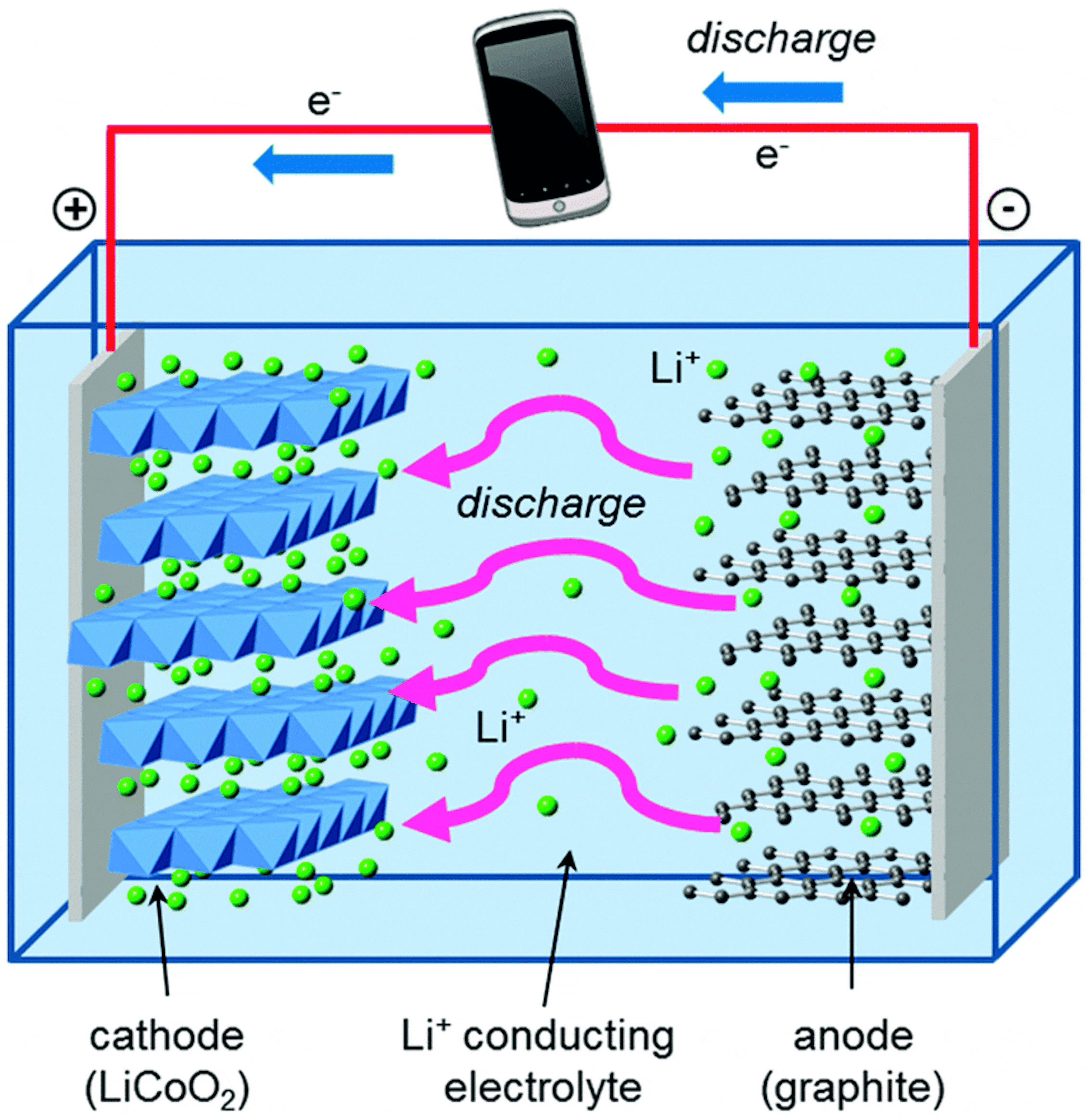
Lithium Battery Technologies.
1) Lithium Cobalt Oxide (LCO)
Lithium Cobalt Oxide (LiCoO2) is a mature battery technology, characterized by a long cycle life and high energy densities. The cathode consists of a cobalt oxide and anode is of graphite carbon. The cathode has a layered structure and during discharge, lithium ions move from the anode to the cathode. The flow reverses on charge. The drawback of Li-cobalt is a relatively short life span, low thermal stability and limited load capabilities (specific power).
Typical Specifications of LCO with Graphite anode
- Voltages: 3.60V nominal; typical operating range 3.0–4.2V/cell
- Specific Energy: 150–200Wh/kg. Specialty cells provide up to 240Wh/kg.
- Charge (C-rate): 0.7–1C, charges to 4.20V.
- Discharge (C-rate): 1C; 2.50V cut off. Discharge above 1C shortens battery life.
- Cycle life: 500–1000, related to depth of discharge, load, temperature.
- Thermal runaway: 150°C. Full charge promotes thermal runaway.
- Applications: Mobile phones, tablets, laptops, cameras
- Note: Charge current above 1C shortens life of LCO battery.
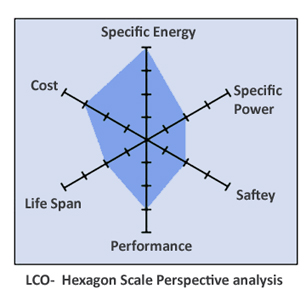
2) Lithium Manganese (LMO)
Lithium Manganese (LiMn2O4) battery cell's cathode is made out of lithium manganese oxide. It forms a three-dimensional spinel structure which improves ion flow on the electrode, which results in lower internal resistance and improved current handling, in comparsion with Cobalt based batteries. This three dimensional spinel architecture also exhibits high thermal stability and enhanced safety, but at the cost of cycle, calendar life, and energy density. Pure Li-manganese batteries are no longer commonly, they may only be used for special applications. Recent trends indicate that most Li-manganese batteries are blended with lithium nickel manganese cobalt oxide (NMC) to improve the specific energy and prolong the life span, and is popular in most Electric Vehicles.
Typical Specifications of LMO with Graphite anode
- Voltages: 3.70V (3.80V) nominal; typical operating range 3.0–4.2V/cell
- Specific Energy: 100–150Wh/kg
- Charge (C-rate): 0.7–1C typical, 3C maximum, charges to 4.20V (most cells)
- Discharge (C-rate): 1C; 10C possible with some cells, 30C pulse (5s), 2.50V cut-off
- Cycle life: 300–700 (related to depth of discharge, temperature)
- Thermal runaway: 250°C typical. High charge promotes thermal runaway
- Applications: Power tools, medical devices, electric powertrains
- Note: Safer than LCO, commonly mixed with NMC for improved performance.
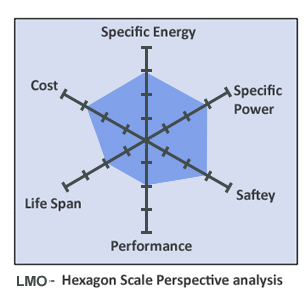
3)Lithium Nickel Cobalt Aluminum Oxide (NCA)
Lithium Nickel Cobalt Aluminum Oxide (LiNiCoAlO2) cathode material is highly thermally stable cathode material, doping the lithium nickel cobalt oxide with aluminum both stabilizes its thermal and charge transfer resistance. NCA shares similarities with NMC in offering high specific energy, reasonably good specific power and a long life span.
High energy and power densities, as well as good life span, make NCA a candidate for EV powertrains
Typical Specifications of NCA with Graphite anode
- Voltages: 3.60V nominal; typical operating range 3.0–4.2V/cell
- Specific Energy: 200-260Wh/kg; 300Wh/kg predictable
- Charge (C-rate): 0.7C, charges to 4.20V, 3h charge typical, fast charge possible
- Discharge (C-rate): 1C typical; 3.00V cut-off; high discharge rate shortens battery life
- Cycle life: 500 (related to depth of discharge, temperature)
- Thermal runaway: 250°C typical. High charge promotes thermal runaway
- Applications: Medical devices, industrial, electric powertrain
- Note: High discharge rate of NCA shortens battery life.
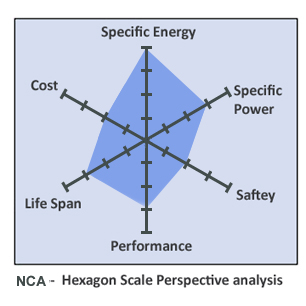
4.Lithium Nickel Manganese Cobalt oxide (NMC)
Lithium Nickel Cobalt Manganese (Li(NiCoMn)O2) batteries are made of cathode materials which is combination of nickel, manganese and cobalt, typically one-third nickel, one-third manganese and one-third cobalt, also known as 1-1-1. Similar to Li-manganese, NMC can be tailored to serve as Energy Cells or Power Cells, like other lithium-ion battery varieties, NMC batteries can have either a high specific energy density or a high specific power. They however cannot have both properties in the same pack. For example, NMC in an 18650 cell for moderate load condition has a capacity of about 2,800mAh andcan deliver 4A to 5A. NMC in the same cell size can be optimized for specific power with capacity of about 2000mAh, but capable of delivering a continuous discharge current of 20A.
Typical Specifications of NMC with Graphite anode
- Voltages: 3.60V, 3.70V nominal; typical operating range 3.0–4.2V/cell, or higher
- Specific Energy: 150–220Wh/kg
- Charge (C-rate): 0.7–1C, charges to 4.20V, some go to 4.30V; 3h charge typical.
- Discharge (C-rate): 1C; 2C possible on some cells; 2.50V cut-off
- Cycle life: 1000–2000 (related to depth of discharge, temperature)
- Thermal runaway: 210°C typical. High charge promotes thermal runaway
- Applications: power tools, e-bikes and other electric powertrains
- Note: Charge current above 1C shortens life of NMC.

5) Lihium Ion Phosphate (LFP)
In Lithium Iron Phosphate (LiFePO4) Batteries phosphate is used as cathode material, Li-phosphate offers good electrochemical performance with low resistance. This nano-scale phosphate material for cathode in Lithium Ion batteries is most viable option because of its low cost,environmental friendliness, long cycle and calendar lives (chemical stability) and good capacity (170 mAh/g). Doping with transition metals results in reduction of internal impedance. LiFePO4 batteries are incombustible in case of misuse during charging or discharging, they are more stable during overcharge or short circuit conditions and they can withstand high temperatures without decomposing. LFP is more tolerant to full charge conditions and is compartively less vunerable to stress even if kept at high voltage for a prolonged time.
Typical Specifications of LFP with Graphite anode
- Voltages: 3.20, 3.30V nominal; typical operating range 2.5–3.65V/cell
- Specific Energy: 90–120Wh/kg
- Charge (C-rate): 1C typical, charges to 3.65V; 3h charge time typical
- Discharge (C-rate): 1C, 25C on some cells; 40A pulse (2s); 2.50V cut-off
- Cycle life: 2000 and higher (related to depth of discharge, temperature)
- Thermal runaway: 270°C Very safe battery even if fully charged
- Applications: For high load currents & endurance, and electric powertrains
- Note: LFP if discharged lower than 2V can causes damage
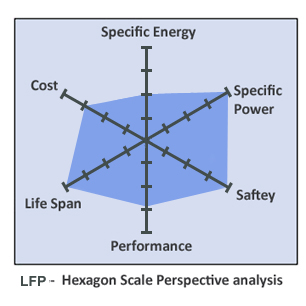
- Voltages: 2.40V nominal; typical operating range 1.8–2.85V/cell.
- Specific Energy: 50–80Wh/kg
- Charge (C-rate): 1C typical; 5C maximum, charges to 2.85V.
- Discharge (C-rate): 10C possible, 30C 5s pulse.
- Cycle life: 3000 to 7000
- Thermal runaway: One of safest Li-ion batteries.
- Applications: UPS, electric powertrain, solar-powered street lighting.
- Note: LTO- Long life, fast charge, safest, wide temperature range but low specific energy.
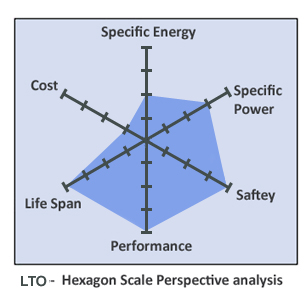
2]Compare the differences between each type of Li+ion batteries based on their characteristics.
Lithium Batteries
Lithium-ion batteries are used in most aspects of our everyday lives. Most devices like smartphones and laptops cannot operate without these batteries. Lithium-ion batteries have also become very important in the field of electromobility as it is now the battery of choice in most electric vehicles. Its high specific energy gives it an advantage over other batteries.
There are different types of lithium-ion batteries and the main difference between them lies in their cathode materials. Different kinds of lithium-ion batteries offer different features, with trade-offs between specific power, specific energy, safety, lifespan, cost, and performance.
The six lithium-ion battery types that we will be comparing are Lithium Cobalt Oxide, Lithium Manganese Oxide, Lithium Nickel Manganese Cobalt Oxide, Lithium Iron Phosphate, Lithium Nickel Cobalt Aluminum Oxide, and Lithium Titanate. Firstly, understanding the key terms below will allow for a simpler and easier comparison.
Battery Terms
Specific energy
This defines the battery capacity in weight (Wh/kg). The capacity relates to the runtime. Products requiring long runtimes at moderate load are optimized for high specific energy.
Specific power
It's the ability to deliver a high current and indicates loading capability. Batteries for power tools are made for high specific power and come with a reduced specific energy. A high specific power usually comes with reduced specific energy and vice versa. The pouring of bottled water into a glass is a perfect analogy of the relationship between specific power and specific energy. The water in the bottle can be thought of as specific energy. Pouring the water at a slow rate doesn’t provide enough force (low specific power), but the water lasts longer in the bottle (high specific energy). On the other hand, if we pour the water out at a faster rate, it provides a greater impact (high specific power). However, the water wouldn’t last very long in the bottle ( low specific energy).
Performance
This measures how well the battery works over a wide range of temperatures. Most batteries are sensitive to heat and cold and require climate control. Heat reduces life, and cold lowers performance temporarily.
Lifespan
This reflects cycle life and longevity and is related to factors such as temperature, depth of discharge, and load. Hot climates accelerate capacity loss. Cobalt blended lithium-ion batteries also usually have a graphite anode that limits the cycle life.
Safety
This relates to factors such as the thermal stability of the materials used in the batteries. The materials should have the ability to sustain high temperatures before becoming unstable. Instability can lead to thermal runaway in which flaming gases are vented. Fully charging the battery and keeping it beyond the designated age reduces safety.
Cost
Demand for electric vehicles has generally been lower than anticipated, mainly due to the cost of lithium-ion batteries. Hence cost is a huge factor when selecting the type of lithium-ion battery.

Types of Lithium Batteries
Now that we understand the major battery characteristics, we will use them as the basis for comparing our six types of lithium-ion batteries. The characteristics are rated as either high, moderate, or low. The table below provides a simple comparison of the six lithium-ion battery types.
| Lithium-ion battery Types | SP | SE | SF | LS | CS | PF |
|---|---|---|---|---|---|---|
|
Lithium Cobalt Oxide |
L |
H |
L |
L |
L |
M |
|
Lithium Manganese Oxide |
M |
M |
M |
L |
L |
L |
|
Lithium Nickel Manganese Cobalt Oxide |
M |
H |
M |
M |
L |
M |
|
Lithium Iron Phosphate |
H |
L |
H |
H |
L |
M |
|
Lithium Nickel Cobalt Aluminum Oxide |
M |
H |
L |
M |
M |
M |
|
Lithium Titanate |
M |
L |
H |
H |
H |
H |
- SP stands for specific power
- SE stands for specific energy
- SF stands for safety
- LS stands for lifespan
- CS stands for cost
- PF stands for performance
- L stands for low
- M stands for moderate
- H stands for high
Lithium Cobalt Oxide
Lithium Cobalt Oxide has high specific energy compared to the other batteries, making it the preferred choice for laptops and mobile phones. It also has a low cost and a moderate performance. However, it is highly unfavorable in all the other aspects when compared to the other lithium-ion batteries. It has low specific power, low safety, and a low lifespan.
Lithium Manganese Oxide
Lithium Manganese Oxide has moderate specific power, moderate specific energy, and a moderate level of safety when compared to the other types of lithium-ion batteries. It has the added advantage of a low cost. The downsides are its low performance and low lifespan. It is usually used in medical devices and power tools.
Lithium Nickel Manganese Cobalt Oxide has two major advantages as compared to the other batteries. The first one is its high specific energy, which makes it desirable in electric powertrains, electric vehicles, and electric bikes. The other is its low cost. It is moderate in terms of specific power, safety, lifespan, and performance when compared to the other lithium-ion batteries. It can be optimized to either have high specific power or high specific energy.
Lithium Iron Phosphate
Lithium Iron Phospate only has one major disadvantage when compared to other types of lithium-ion batteries, and that is its low specific energy. Other than that, it has moderate to high ratings in all the other characteristics. It has high specific power, offers a high level of safety, has a high lifespan, and comes at a low cost. The performance of this battery is also moderate. It is often employed in electric motorcycles and other applications that require a long lifespan and a high level of safety.
Lithium Nickel Cobalt Aluminum Oxide
Lithium Nickel Cbalt Aluminum Oxide offers one strong advantage compared to the five other batteries: high specific energy. It is pretty moderate in the rest of the characteristics like performance, cost, specific power, and lifespan. The only downside to this battery type is its low level of safety. Its high specific energy and moderate lifespan make it a good candidate for electric powertrains.
Lithium Titanate
Litium Titanate offers high safety, high performance, and a high lifespan which are very important features every battery should have. Its specific energy is low compared to the five other lithium-ion batteries, but it compensates for this with moderate specific power. The only major disadvantage of lithium titanate as compared to the other lithium-ion batteries is its extremely high cost. Another important feature of this battery worthy of mention is its remarkably fast recharge time. It can be used for storing solar energy and creating smart grids.

Leave a comment
Thanks for choosing to leave a comment. Please keep in mind that all the comments are moderated as per our comment policy, and your email will not be published for privacy reasons. Please leave a personal & meaningful conversation.
Other comments...
Be the first to add a comment
Read more Projects by Pratik Mankar (13)
Week 1 Understanding Different Battery Chemistry
Pratik Mankar AIM To understand different Battery chemistry. OBJECTIVES 1] Prepare a table which includes materials & chemical reactions occurring at the anode and cathode of LCO, LMO, NCA, NMC, LFP and LTO type of lithium ion cells.Give your detailed explanation on it. 2]Compare the differences between…
24 Jan 2023 04:09 AM IST
Final Project: Electric Rickshaw modelling
Pratik Mankar AIM Design of an Electric Rickshaw using MATLAB Simulink (three wheel passenger vehicle). ABSTRACT In this project, we work to create the MATLAB model of the ELECTRIC RICKHAEW by doing a PM brushed type DC motor and a suitable Lithium-Ion battery for the motor. Before this, we will remember…
16 Jan 2023 04:36 PM IST
Project-1: Modelling an electric Car with Li-ion battery
Pratik Mankar AIM To Create a MATLAB model of an electric car in which we uses which uses lithium ion battery and suitable motor choosing a suitable blocks from the Powertrain block set and Implement the Vehicle Speed by using PI Controller and generate the accelerator and brake commands. OBJECTIVES To prepare the…
04 Jan 2023 04:18 AM IST
Project 1 (Mini Project on Vehicle Direction Detection
Pratik Mankar MBD Live Batch 2 Mini Project - Vehicle Direction Determination AIM To create the Vehicle Direction Determination model according to the given requirements. INTRODUCTION Identifying the direction of the vehicle is one of the important & diverse features in Autonomous driving…
30 Sep 2022 11:50 AM IST
Related Courses

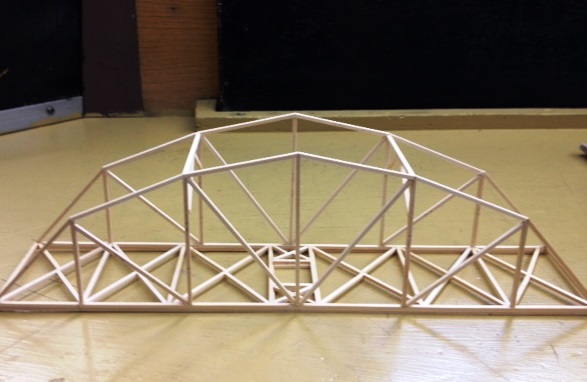
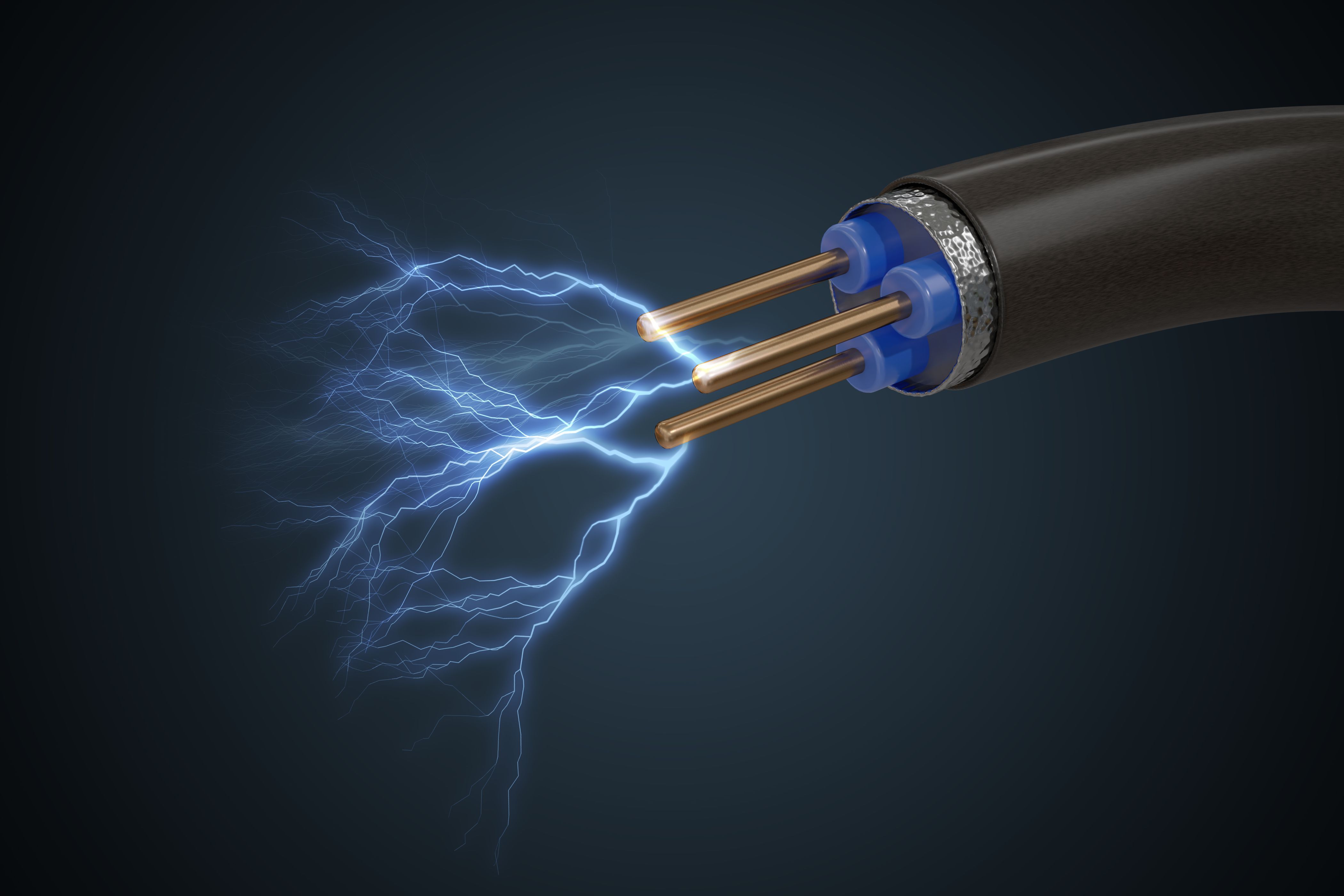
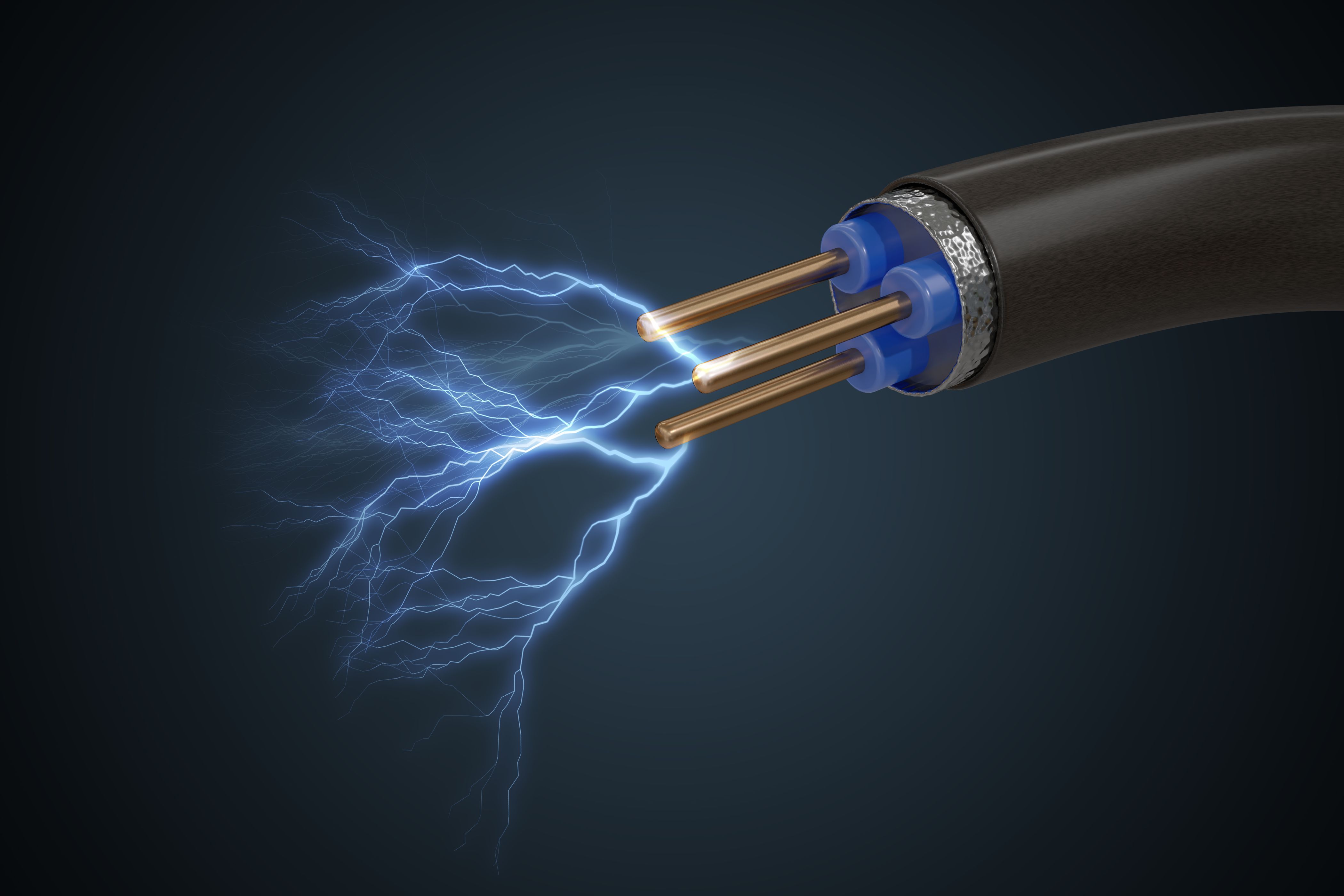
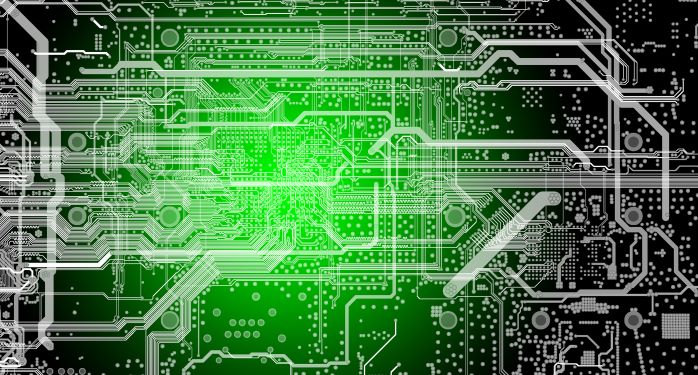

0 Hours of Content

Skill-Lync offers industry relevant advanced engineering courses for engineering students by partnering with industry experts.
Our Company
4th Floor, BLOCK-B, Velachery - Tambaram Main Rd, Ram Nagar South, Madipakkam, Chennai, Tamil Nadu 600042.
Top Individual Courses
Top PG Programs
Skill-Lync Plus
Trending Blogs
© 2025 Skill-Lync Inc. All Rights Reserved.








